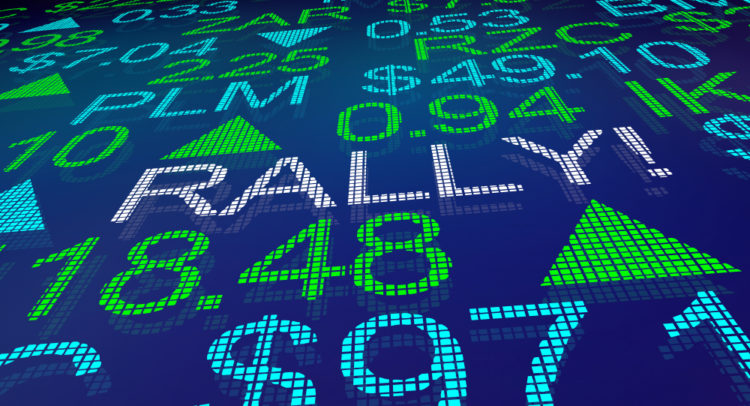Strong holiday sales added fuel to the end-of-year Wall Street rally on Monday, with the S&P 500 hitting yet another high.
Elevate Your Investing Strategy:
- Take advantage of TipRanks Premium at 55% off! Unlock powerful investing tools, advanced data, and expert analyst insights to help you invest with confidence.
American consumers opened up their wallets and spent big during the holiday season, according to a Mastercard SpendingPulse report released over the weekend.
U.S. retail sales grew at an annual rate of 8.5% this holiday season, measured as the period from November 1 to December 24. They were led by online sales, which jumped 11% from the previous year.
Mastercard SpendingPulse defines “U.S. retail sales” as sales at retailers and food services merchants of all sizes but excludes sales by service sectors like airlines and hotels.
“Shoppers were eager to secure their gifts ahead of the retail rush, with conversations surrounding supply chain and labor supply issues sending consumers online and to stores in droves,” said Steve Sadove, senior advisor for Mastercard and former CEO and Chairman of Saks Incorporated.
He then continued, “Consumers splurged throughout the season, with apparel and department stores experiencing strong growth as shoppers sought to put their best-dressed foot forward.”
The strong holiday sales come against several headwinds, like the spread of the Omicron variant of COVID-19, supply chain bottlenecks, and rising inflation.
Also, they come a couple of weeks after the U.S. government reported that U.S. sales rose 0.3 percent in November 2021, well below market expectations. That’s a broader measure of retail sales across the nation and a big chunk of the Gross Domestic Product, which grew at 2.3% in the third quarter of 2021.
Nonetheless, Wall Street seems to have forgotten all about these numbers, focusing instead on the holiday season, which bodes well for the subsequent government reports on retail sales and GDP. As a result, it led to Monday’s big rally on Wall Street.
The rally added to the solid gains posted in the previous week and bodes well for the Santa Clause rally, which is the usual run-up in stocks seen in the last week of December and the first week of January.
That’s a period where Wall Street trade is dominated by small investors, who tend to be more sentiment-driven rather than value-oriented, chasing after momentum stocks, and helping push major indexes higher. In addition, year-end bonuses and the redeployment of cash from December tax-selling provide the needed liquidity to keep the rally going.
Still, traders and investors should be cautious about buying into the Santa Claus rally, especially since central banks have already begun to take liquidity out of the economy.
Disclosure: At the time of publication, Panos Moudoukoutas owned shares of MasterCard.
Disclaimer: The information contained in this article represents the views and opinion of the writer only, and not the views or opinion of TipRanks or its affiliates Read full disclaimer >
















